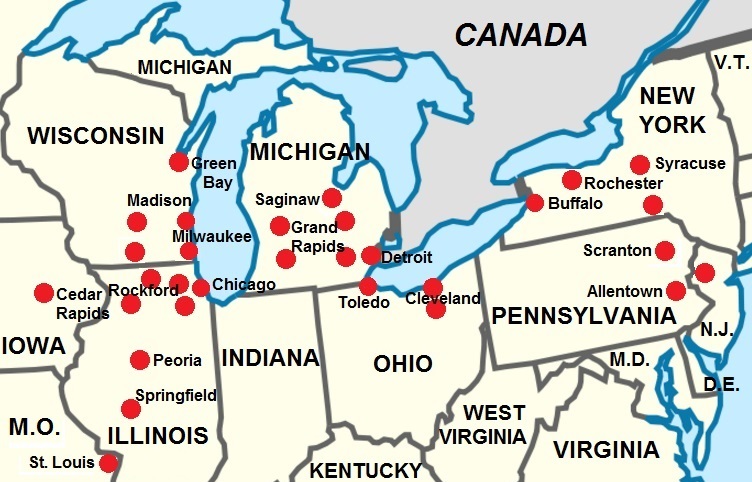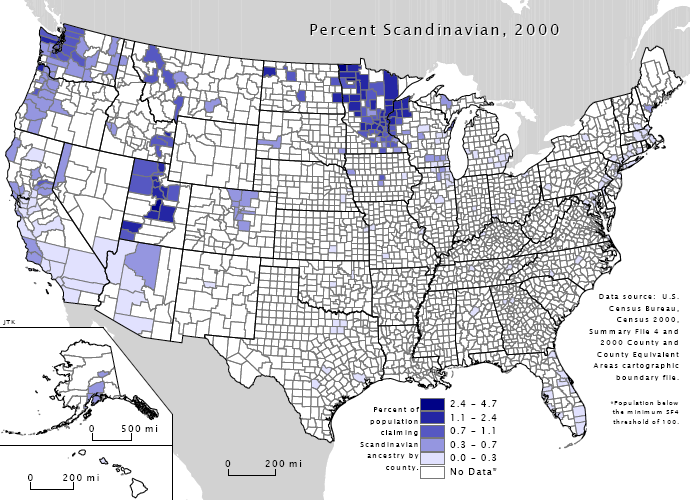|
Th-stopping
''Th''-stopping is the realization of the dental fricatives as stops—either dental or alveolar—which occurs in several dialects of English. In some accents, such as of Indian English and middle- or upper-class Irish English, they are realized as the dental stops and as such do not merge with the alveolar stops ; thus, for example, ''tin'' ( in Ireland and in India) is not a homophone of ''thin'' . In other accents, such as varieties of Caribbean English, Nigerian English, Liberian English, and older, rural, or working-class Irish English, such pairs are indeed merged. Variation between both dental and alveolar forms exists in much of the working-class English speech of North America and sometimes southern England. ''Th''-stopping occurred in all continental Germanic languages, resulting in cognates such as German ''die'' for "the" and ''Bruder'' for "brother". New York City English For the working class of New York City and its surrounding region, the f ... [...More Info...] [...Related Items...] OR: [Wikipedia] [Google] [Baidu] |
Inland Northern American English
Inland Northern (American) English, also known in American linguistics as the Inland North or Great Lakes dialect, is an American English dialect spoken primarily by White Americans in a geographic band reaching from the major urban areas of Upstate New York westward along the Erie Canal and through much of the U.S. Great Lakes region. The most distinctive Inland Northern accents are spoken in Chicago, Milwaukee, Detroit, Cleveland, Buffalo, Rochester, and Syracuse. The dialect can be heard as far west as eastern Iowa and even among certain demographics in the Twin Cities, Minnesota.Chapman, Kaila (2017). "The Northern Cities Shift: Minnesota's Ever-Changing Vowel Space". Macalester College: "The satisfaction of the three NCS measures was found only in the 35-55 year old male speakers. The three male speakers fully participating in the NCS had high levels of education and strong ties to the city" (41). Some of its features have also infiltrated a geographic corridor from Chica ... [...More Info...] [...Related Items...] OR: [Wikipedia] [Google] [Baidu] |
Rhoticity In English
Rhoticity in English is the pronunciation of the historical rhotic consonant by English speakers. The presence or absence of rhoticity is one of the most prominent distinctions by which varieties of English can be classified. In rhotic varieties, the historical English sound is preserved in all pronunciation contexts. In non-rhotic varieties, speakers no longer pronounce in postvocalic environments—that is, when it is immediately after a vowel and not followed by another vowel. For example, in isolation, a rhotic English speaker pronounces the words ''hard'' and ''butter'' as and , whereas a non-rhotic speaker "drops" or "deletes" the sound, pronouncing them as and . When an ''r'' is at the end of a word but the next word begins with a vowel, as in the phrase "bette''r a''pples", most non-rhotic speakers will pronounce the in that position (the linking R), since it is followed by a vowel in this case. The rhotic varieties of English include the dialects of West Country ... [...More Info...] [...Related Items...] OR: [Wikipedia] [Google] [Baidu] |
Hiberno-English
Hiberno-English (from Latin '' Hibernia'': "Ireland"), and in ga, Béarla na hÉireann. or Irish English, also formerly Anglo-Irish, is the set of English dialects native to the island of Ireland (including both the Republic of Ireland and Northern Ireland). In the Republic of Ireland, English is one of two official languages, along with the Irish language, and is the country's working language. Irish English's writing standards, such as its spelling, align with British English. However, Irish English's diverse accents and some of its grammatical structures and vocabulary are unique, with some influences deriving from the Irish language and some notably conservative phonological features: features no longer common in the accents of England or North America. Phonologists today often divide Irish English into four or five overarching dialects or accents:Hickey, Raymond. ''A Sound Atlas of Irish English'', Volume 1. Walter de Gruyter: 2004pp. 57–60. Ulster accents, ... [...More Info...] [...Related Items...] OR: [Wikipedia] [Google] [Baidu] |
Philippine English
Philippine English (similar and related to American English) is any variety of English native to the Philippines, including those used by the media and the vast majority of educated Filipinos and English learners in the Philippines from adjacent Asian countries. English is taught in schools as one of the two official languages of the country, the other being Filipino (Tagalog). Due to the influx of Filipino English teachers overseas, Philippine English is also becoming the prevalent variety of English being learned in the Far East as taught by Filipino teachers in various Asian countries such as Korea, Japan and Thailand, among others. Due to the highly multilingual nature of the Philippines, code-switching such as Taglish (Tagalog-infused English) and Bislish (English infused with any of the Bisayan languages) is prevalent across domains from casual settings to formal situations. History Filipinos were first introduced to English when the British invaded and occupi ... [...More Info...] [...Related Items...] OR: [Wikipedia] [Google] [Baidu] |
Irish English
Hiberno-English (from Latin '' Hibernia'': "Ireland"), and in ga, Béarla na hÉireann. or Irish English, also formerly Anglo-Irish, is the set of English dialects native to the island of Ireland (including both the Republic of Ireland and Northern Ireland). In the Republic of Ireland, English is one of two official languages, along with the Irish language, and is the country's working language. Irish English's writing standards, such as its spelling, align with British English. However, Irish English's diverse accents and some of its grammatical structures and vocabulary are unique, with some influences deriving from the Irish language and some notably conservative phonological features: features no longer common in the accents of England or North America. Phonologists today often divide Irish English into four or five overarching dialects or accents:Hickey, Raymond. ''A Sound Atlas of Irish English'', Volume 1. Walter de Gruyter: 2004pp. 57–60. Ulster accents, ... [...More Info...] [...Related Items...] OR: [Wikipedia] [Google] [Baidu] |
Caribbean English
Caribbean English (CE, CarE) is a set of dialects of the English language which are spoken in the Caribbean and Liberia, most countries on the Caribbean coast of Central America, and Guyana and Suriname on the coast of South America. Caribbean English is influenced by, but is distinct to, the English-based creole languages spoken in the region. Though dialects of Caribbean English vary structurally and phonetically across the region, all are primarily derived from British English and West African languages. In countries with a plurality Indian population, such as Trinidad and Tobago and Guyana, Caribbean English has further been influenced by Hindustani and other South Asian languages. Overview * The daily-used English in the Caribbean has a different set of pronouns, typically ''me, meh'' or ''mi'', ''you, yuh, he, she, it, we, wi'' or ''alawe, wunna'' or ''unu'', and ''dem'' or ''day''. ''I, mi, my, he, she, ih, it, we, wi'' or ''alawe'', ''allayu'' or ''unu'', and ... [...More Info...] [...Related Items...] OR: [Wikipedia] [Google] [Baidu] |
Dental Consonant
A dental consonant is a consonant articulated with the tongue against the upper teeth, such as , . In some languages, dentals are distinguished from other groups, such as alveolar consonants, in which the tongue contacts the gum ridge. Dental consonants share acoustic similarity and in Latin script are generally written with consistent symbols (e.g. ''t'', ''d'', ''n''). In the International Phonetic Alphabet, the diacritic for dental consonant is . When there is no room under the letter, it may be placed above, using the character , such as in / p͆/. Cross-linguistically For many languages, such as Albanian, Irish and Russian, velarization is generally associated with more dental articulations of coronal consonants. Thus, velarized consonants, such as Albanian , tend to be dental or denti-alveolar, and non-velarized consonants tend to be retracted to an alveolar position. Sanskrit, Hindustani and all other Indo-Aryan languages have an entire set of dental stops that o ... [...More Info...] [...Related Items...] OR: [Wikipedia] [Google] [Baidu] |
Yooper English
North-Central American English (in the United States, also known as the Upper Midwestern or North-Central dialect and stereotypically recognized as a Minnesota accent or Wisconsin accent) is an American English dialect native to the Upper Midwestern United States, an area that somewhat overlaps with speakers of the separate Inland North dialect situated more in the eastern Great Lakes region. The North-Central dialect is considered to have developed in a residual dialect region from the neighboring distinct dialect regions of the Western United States, Inland North, and Canada. If a strict ''cot–caught'' merger is used to define the North-Central regional dialect, it covers the Upper Peninsula of Michigan, the northern border of Wisconsin, the whole northern half of Minnesota, some of northern South Dakota, and most of North Dakota; otherwise, the dialect may be considered to extend to all of Minnesota, North Dakota, most of South Dakota, northern Iowa, and all of Wisconsin ou ... [...More Info...] [...Related Items...] OR: [Wikipedia] [Google] [Baidu] |
Fennoscandia
__NOTOC__ Fennoscandia ( Finnish, Swedish and no, Fennoskandia, nocat=1; russian: Фенноскандия, Fennoskandiya) or the Fennoscandian Peninsula is the geographical peninsula in Europe, which includes the Scandinavian and Kola peninsulas, mainland Finland, and Karelia. Administratively this roughly encompasses the mainlands of Finland, Norway and Sweden, as well as Murmansk Oblast, much of the Republic of Karelia, and parts of northern Leningrad Oblast in Russia. Its name comes from the Latin words ''Fennia'' (Finland) and ''Scandia'' (Scandinavian). The term was first used by the Finnish geologist Wilhelm Ramsay in 1898. Geologically, the area is distinct because its bedrock is Archean granite and gneiss with very little limestone Limestone ( calcium carbonate ) is a type of carbonate sedimentary rock which is the main source of the material lime. It is composed mostly of the minerals calcite and aragonite, which are different crystal forms of . Lime ... [...More Info...] [...Related Items...] OR: [Wikipedia] [Google] [Baidu] |
Estuary English
Estuary English is an English accent associated with the area along the River Thames and its estuary, including London. Phonetician John C. Wells proposed a definition of Estuary English as "Standard English spoken with the accent of the southeast of England". He views Estuary English as an emerging standard accent of England: an "intermediate" between the 20th-century higher-class non-regional standard accent, Received Pronunciation, and the 20th-century lower-class local London accent, Cockney. There is some debate among linguists as to where Cockney speech ends and Estuary English begins. Name Cruttenden uses the term London Regional General British in preference to the popular term 'Estuary English'. The names listed above may be abbreviated: * Estuary English → EE * London Regional General British → London RGB Wells has used different names for an accent closer to Cockney (Popular London) or closer to Received Pronunciation (London Regional Standard or South-Easte ... [...More Info...] [...Related Items...] OR: [Wikipedia] [Google] [Baidu] |
Mid-Atlantic American English
Philadelphia English is a variety or dialect of American English native to Philadelphia and extending into Philadelphia's metropolitan area throughout the Delaware Valley, including southeastern Pennsylvania, counties of northern Delaware (especially New Castle and Kent), the northern Eastern Shore of Maryland, and all of South Jersey, with the dialect being spoken in cities such as Wilmington, Atlantic City, Camden, Vineland, and Dover. Philadelphia English is one of the best-studied types of English, as Philadelphia's University of Pennsylvania is the home institution of pioneering sociolinguist William Labov. Philadelphia English shares certain features with New York City English and Midland American English, although it remains a distinct dialect of its own. Baltimore English is a closely related and nearly identical dialect, or a subdialect of Philadelphia English, prevalent in nearby Baltimore and the its metropolitan area; both Philadelphia and Baltimore accents toge ... [...More Info...] [...Related Items...] OR: [Wikipedia] [Google] [Baidu] |


